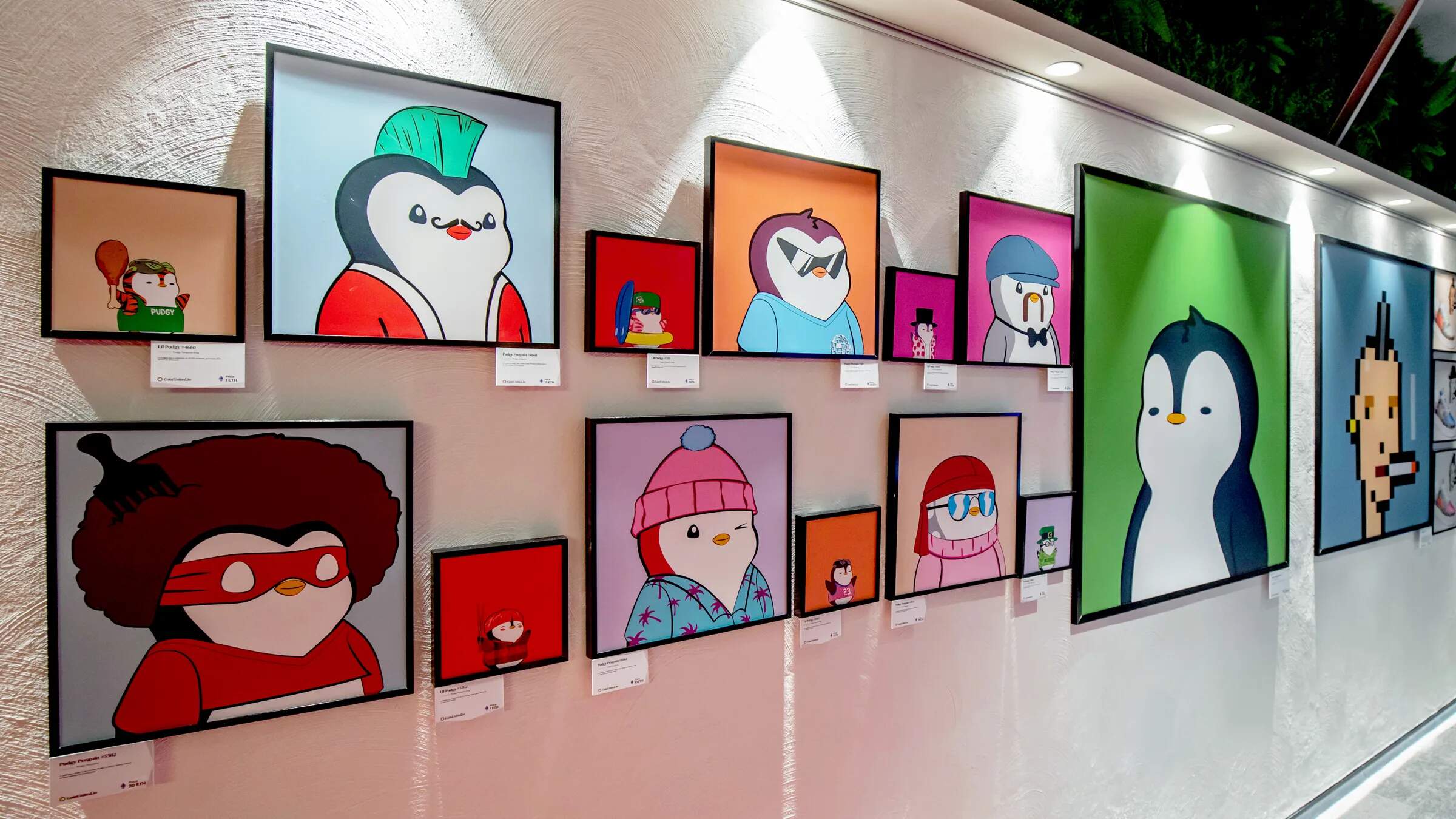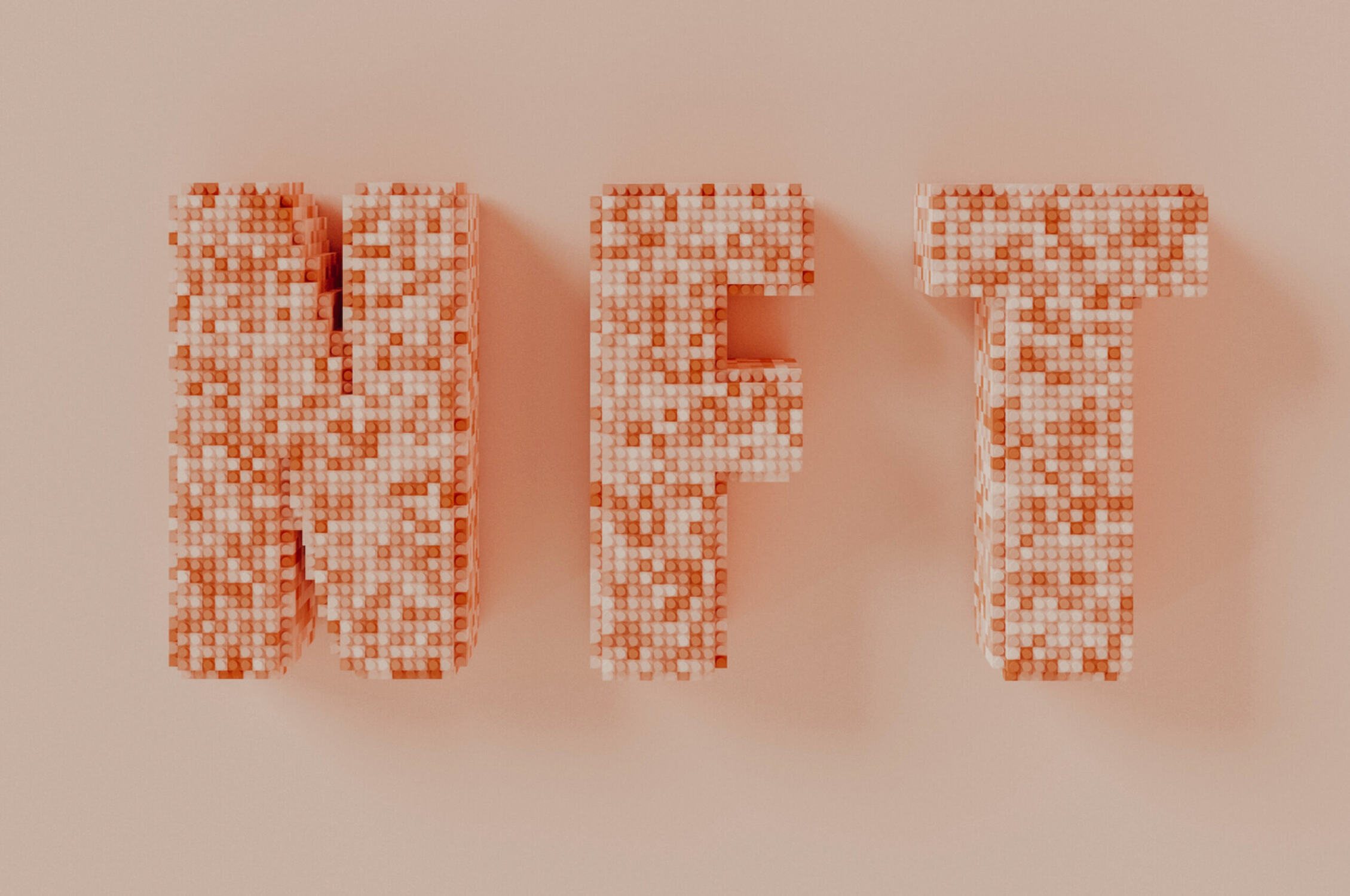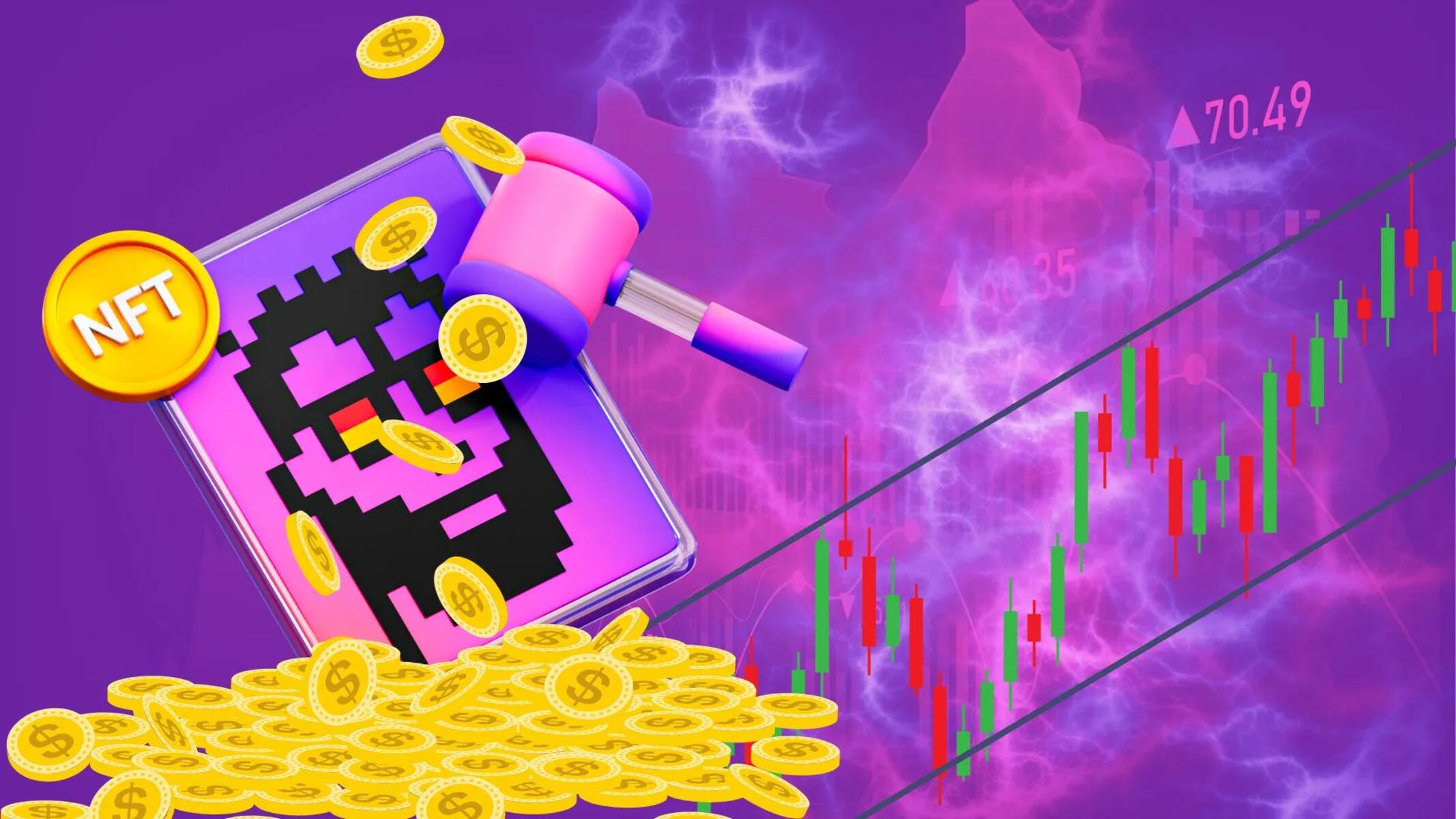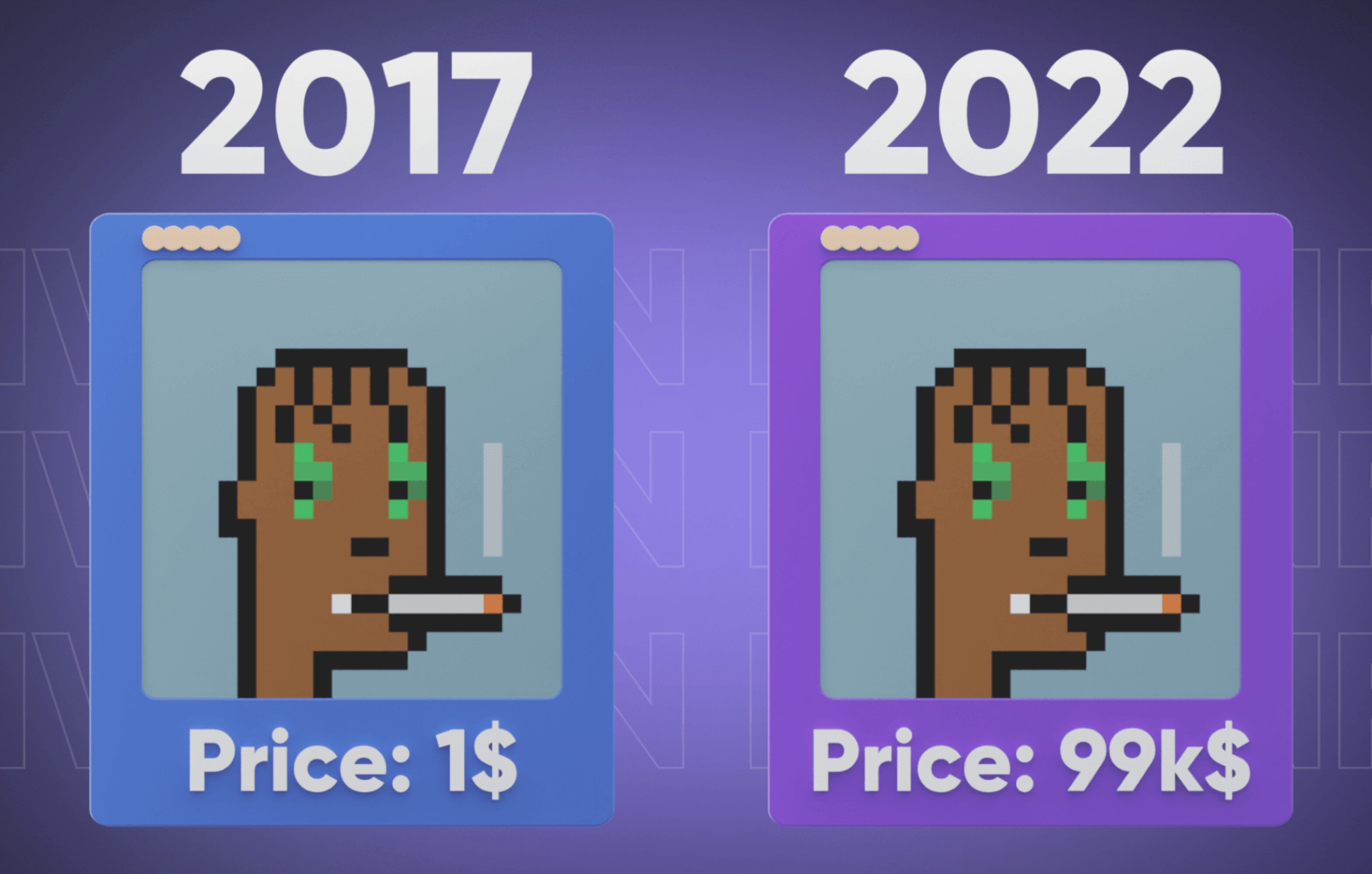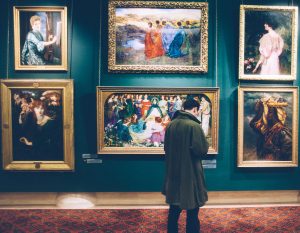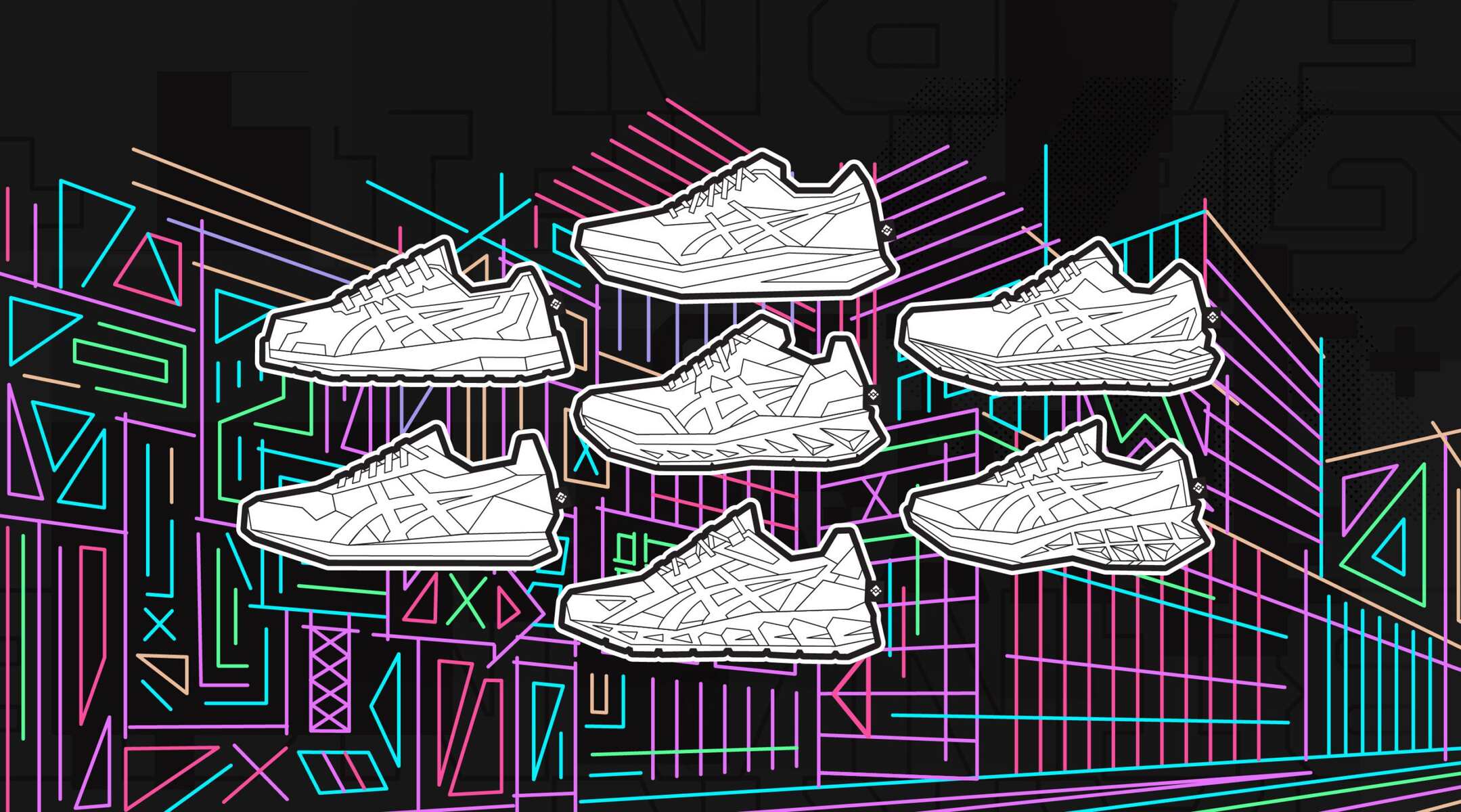Introduction
Welcome to the exciting world of NFT (Non-Fungible Token) art, where traditional art meets blockchain technology. With the rise of digital art and the increasing popularity of cryptocurrencies, NFT art has emerged as a groundbreaking concept that has revolutionized the art industry. Artists now have the opportunity to create, sell, and trade unique digital assets securely and transparently on the blockchain.
So, what exactly is an NFT? NFTs are digital assets that represent ownership of a unique item or piece of content. Unlike cryptocurrencies such as Bitcoin or Ethereum, which are fungible and can be exchanged on a 1:1 basis, NFTs are indivisible and hold distinct value. Each NFT is stored on the blockchain, providing a permanent record of ownership and authenticity.
NFT art has opened up a whole new realm of possibilities for artists to monetize their digital creations. Artists can now showcase their talent, connect with a global audience, and potentially generate significant revenue through the sale of their NFT artworks.
This article will guide you through the process of making money with NFT art. Whether you are an established artist looking to expand your reach or a budding creator looking to explore new opportunities, we will provide you with valuable insights and practical tips to navigate the vibrant world of NFT art.
What are NFTs?
NFTs, or Non-Fungible Tokens, have been making waves in the digital world. But what exactly are they? NFTs are unique digital assets that represent ownership or proof of authenticity for a specific item or piece of content. While cryptocurrencies like Bitcoin and Ethereum are fungible, meaning they can be exchanged on a 1:1 basis, NFTs are indivisible and hold distinct value.
Think of NFTs as a digital certificate of authenticity. They use blockchain technology to verify and validate the ownership and uniqueness of a digital asset. Unlike physical artworks that can be reproduced, NFTs establish a verifiable digital original that cannot be replicated.
What makes NFTs truly fascinating is their ability to represent a wide range of digital content. From digital art and music to virtual real estate and collectibles, NFTs can be used to tokenize and monetize various forms of digital assets.
But what sets NFTs apart is their ability to provide proof of ownership and authenticity. Each NFT contains a unique identifier, known as a token, that is stored on the blockchain. This ensures that the ownership record is permanent, transparent, and cannot be tampered with.
One of the key features of NFTs is their ability to allow creators to earn royalties. Whenever an NFT is sold or traded on the secondary market, the creator can earn a percentage of the sale. This provides artists with a potential ongoing revenue stream from their digital creations, even after the initial sale.
While NFTs have gained significant attention in recent years, it’s important to note that they are still a relatively new and evolving concept. As with any emerging technology, there are still challenges and uncertainties surrounding NFTs, such as energy consumption and environmental impact.
NFTs have certainly brought a new level of excitement and possibility to the world of digital art and beyond. From opening up new revenue streams for creators to providing a unique and interactive digital ownership experience for collectors, NFTs have the potential to reshape the way we create, sell, and enjoy digital content.
How Does NFT Art Work?
NFT art operates on the principle of tokenization, which means that a unique digital asset is represented as an NFT on the blockchain. This process allows artists to mint and authenticate their digital creations, establish ownership rights, and facilitate buying and selling in the digital art market.
When an artist creates an NFT artwork, they assign a token value to it, which represents the ownership and authenticity of that specific piece. The token is then stored on the blockchain, creating an immutable record of ownership that can be verified by anyone.
To create NFT art, artists typically choose a platform that supports the minting and trading of NFTs. These platforms provide the necessary tools and infrastructure to upload digital artwork and convert it into an NFT.
Once the artwork is uploaded, artists can add additional details such as the title, description, and metadata to enhance the value and context of the artwork. This information helps potential buyers to understand the artistic concept, medium, and other relevant details.
The creation of an NFT art piece often involves the payment of fees, such as minting fees and gas fees, which are required to complete the transaction on the blockchain. These fees vary depending on the platform and the current network congestion, so it’s important for artists to consider these costs when pricing their NFT artworks.
After minting, artists can choose to sell their NFT art either through a marketplace affiliated with the minting platform or through other secondary markets. These marketplaces act as platforms for artists to showcase and sell their NFT artworks to potential collectors.
When a buyer purchases an NFT art piece, they become the rightful owner and holder of that specific token. The ownership is recorded on the blockchain, providing transparency and proof of authenticity. Artists can earn royalties from subsequent sales of their NFTs through the implementation of smart contracts that automatically allocate a percentage of the sale to the creator.
It’s important to note that the value of NFT art is determined by various factors, including the reputation and popularity of the artist, the uniqueness and rarity of the artwork, and the demand from collectors. NFT art is a rapidly evolving market, and prices can vary greatly. Therefore, artists should carefully consider these factors when pricing their NFT artworks to ensure a fair and attractive offer.
Overall, NFT art offers artists an exciting platform to monetize their digital creations, connect with a global audience, and benefit from the unique features and opportunities provided by blockchain technology.
How to Create NFT Art
Creating NFT art involves a few simple steps that allow artists to transform their digital creations into unique, tokenized assets. Here’s a step-by-step guide on how to create NFT art:
- Choose a Blockchain Platform: Start by selecting a blockchain platform that supports the creation and trading of NFTs. Ethereum is currently the most popular blockchain for NFTs, but there are other emerging platforms like Binance Smart Chain and Flow.
- Set Up a Wallet: Create a digital wallet that is compatible with the chosen blockchain platform. The wallet will allow you to securely store, send, and receive your NFTs. Some popular wallets for Ethereum include MetaMask and Trust Wallet.
- Create Your Artwork: Use digital tools, such as graphic design software or digital painting applications, to create your artwork. The flexibility of digital art allows you to experiment with various mediums, styles, and techniques.
- Prepare Your Art for Minting: Convert your artwork into a digital format that is accepted by the chosen blockchain platform. Common file formats include JPEG, PNG, GIF, or MP4 for animated artworks. Make sure your artwork meets the platform’s file size and dimension requirements.
- Mint Your NFT: Upload your artwork to the chosen blockchain platform and follow the instructions for minting an NFT. Provide the necessary details, such as the title, description, and metadata, to enhance the value and context of your artwork.
- Set a Price or Auction: Decide whether you want to set a fixed price for your NFT or opt for an auction-style sale. Setting a price allows interested buyers to purchase your NFT immediately, while an auction can create buzz and potentially drive up the selling price.
- Promote Your NFT Art: Once your NFT is minted, it’s important to promote your artwork to reach potential buyers. Utilize social media platforms, online art communities, and NFT-focused marketplaces to showcase your art, engage with your audience, and build a following.
- Engage with the NFT Community: Participate in NFT communities, forums, and events to connect with other artists, collectors, and enthusiasts. Networking within the NFT community can open up opportunities for collaborations, exhibitions, and further exposure for your NFT art.
Remember that creating NFT art is not just about the technical process; it’s also about the artistic expression and storytelling you bring to your creations. Focus on creating unique, compelling, and authentic art that resonates with your audience.
By following these steps and continuously refining your artistic skills and understanding of the NFT market, you can position yourself for success in the exciting world of NFT art.
Choosing the Right Platform for Selling NFT Art
With the increasing popularity of NFT art, there are numerous platforms available for artists to sell their digital creations. Choosing the right platform is a crucial step in maximizing the visibility and potential sales of your NFT art. Here are some key factors to consider when selecting a platform:
- Blockchain Compatibility: Ensure that the platform supports the blockchain on which you have minted your NFT art. The most popular blockchain for NFTs is Ethereum, but platforms like Binance Smart Chain and Flow are also gaining traction.
- User Base and Community: Evaluate the platform’s user base and community engagement. Look for platforms that have an active and supportive community of artists, collectors, and enthusiasts. The more active the community, the higher the chances of exposure and potential sales.
- Marketplace Features: Explore the marketplace features offered by the platform. Pay attention to factors such as ease of use, search and discovery functionalities, presentation of NFT art, and support for additional features like auctions and royalties.
- Licensing and Royalties: Consider whether the platform offers options for licensing and royalties. Some platforms allow artists to set specific licensing terms for their NFTs, granting usage rights and earning royalties from subsequent sales in perpetuity.
- Trading Fees and Costs: Evaluate the fees and costs associated with using the platform. Look for platforms that have transparent and reasonable fee structures, including minting fees, transaction fees, and potential listing fees for various types of NFT art.
- Security and Authenticity: Prioritize platforms that prioritize security and authenticity. Ensure that the platform utilizes robust security measures, such as multi-factor authentication and encryption, to protect your NFT art and personal information.
- Platform Reputation: Do some research and check the reputation of the platform. Look for testimonials and reviews from other artists who have used the platform to sell their NFT art. A platform with a positive reputation can provide peace of mind and trust to both artists and buyers.
Remember that there is no one-size-fits-all platform for selling NFT art. Consider your specific needs, preferences, and goals as an artist when evaluating the available options. It may also be beneficial to diversify your presence by listing your art on multiple platforms to increase exposure and reach different audiences.
By carefully selecting the right platform, you can position yourself for success and increase the chances of selling your NFT art to eager collectors who appreciate and value your unique creations.
Pricing Your NFT Artwork
Determining the right price for your NFT artwork is a crucial step in the selling process. Pricing your NFT art appropriately can help attract potential buyers and maximize your earnings. Here are some factors to consider when pricing your NFT artwork:
- Artistic Value: Consider the artistic value of your artwork. Factors such as the uniqueness, creativity, and overall quality of your NFT can influence its perceived value by collectors.
- Artist Reputation: Take into account your reputation and standing within the NFT community. Established artists with a strong following and track record of successful sales may be able to command higher prices compared to emerging artists.
- Scarcity and Rarity: Evaluate the scarcity and rarity of your NFT artwork. If your artwork is part of a limited edition series or if it is the only one of its kind, it may justify a higher price due to its exclusivity.
- Market Demand: Assess the demand for your type of artwork in the NFT market. Research similar NFT art pieces and observe their sale prices to gauge the market demand for your style and genre.
- Historical Sales: Analyze the historical sales data of similar NFT artworks. Look for trends and patterns in the market to help you determine a competitive price range for your own artwork.
- Size and Complexity: Take into account the size and complexity of your NFT artwork. Larger and more intricate pieces may require more time and effort to create, which can be reflected in a higher price.
- Platform Fees: Factor in the platform fees and transaction costs associated with selling your NFT artwork. Be aware of the percentage that the platform takes from each sale and adjust your price accordingly.
- Secondary Market Sales: Keep in mind that if your artwork is resold on the secondary market, you may be entitled to receive a percentage of the sale as royalties. Consider this potential revenue when determining your initial asking price.
- Perceived Value: Consider the perceived value of your NFT artwork by potential buyers. Build a strong narrative and story around your artwork to help justify the price and create an emotional connection with the buyer.
It’s important to strike the right balance between pricing your artwork competitively and ensuring that you are adequately compensated for your creativity and effort. You can start by setting a price that you believe is fair based on the factors mentioned above, and then monitor the market response and make adjustments as necessary.
Remember, pricing your NFT artwork may require some experimentation and adaptation based on market dynamics. By staying informed, engaging with the NFT community, and continuously analyzing market trends, you can refine your pricing strategy and increase your chances of successful sales.
Navigating the NFT Marketplaces
The NFT marketplaces play a crucial role in connecting artists with potential buyers and facilitating the sale of NFT artworks. Navigating these marketplaces effectively is essential for maximizing your exposure and increasing the chances of selling your NFTs. Here are some tips for navigating the NFT marketplaces:
- Research Different Platforms: Familiarize yourself with different NFT marketplaces available on the platform of your choice. This includes popular platforms like OpenSea, Rarible, SuperRare, Foundation, and others. Each platform has its own characteristics, features, and user base, so research and select platforms that align with your artistic style and target audience.
- Create an Appealing Listing: Pay attention to creating an attractive and engaging listing for your NFT artwork. Use eye-catching visuals, include a detailed description, and provide relevant metadata to enhance the listing’s appeal. Make sure your artwork stands out among the sea of other NFTs on the marketplace.
- Engage with the Community: Actively engage with the NFT community on the marketplace platform. Participate in forums, discussions, and social media channels associated with the platform. Connect with other artists, collectors, and enthusiasts, and build relationships within the community.
- Explore Featured and Trending Sections: Take advantage of the featured and trending sections on the marketplace. These sections often attract more attention from buyers, providing increased visibility for your artwork. Stay updated with the latest trends and themes to align your creations with the current market demand.
- Consider Auctions and Limited Editions: Experiment with hosting auctions or releasing limited edition NFTs. Auctions can create a sense of excitement and competition, potentially driving up the price of your artwork. Limited edition releases can increase its perceived value due to their exclusivity.
- Build a Following: Continuously promote your artwork and build a following on the marketplace platform and social media. Regularly share updates, behind-the-scenes content, and engage with your audience. A strong following can lead to loyal collectors who eagerly anticipate your new releases.
- Collaborations and Curation: Consider collaborations with other artists or joining curated collections on the marketplace platform. Collaborations can expand your reach to the audience of the collaborating artist, and curated collections can increase your exposure by being associated with high-quality and curated content.
- Stay Informed: Stay updated with the latest news, trends, and developments in the NFT market. Changes in the market dynamics, emerging platforms, and new opportunities can greatly impact the success of your NFT sales. Network with fellow artists, join communities, and continuously learn and adapt to the evolving landscape.
Remember, navigating the NFT marketplaces requires a combination of strategic planning, creativity, community engagement, and adaptability. By leveraging the features of the platforms, building your presence, and staying informed, you can increase your visibility, attract potential buyers, and thrive in the NFT marketplace.
Promoting and Marketing Your NFT Art
Creating outstanding NFT art is only the first step. To maximize your chances of success, you need to actively promote and market your artwork to reach potential buyers and build a strong following. Here are some effective strategies to promote and market your NFT art:
- Utilize Social Media: Leverage social media platforms to showcase your NFT art. Create dedicated profiles or pages on platforms like Instagram, Twitter, and TikTok to share your artwork, engage with your audience, and build a community around your creations. Use relevant hashtags and engage with other artists and collectors to expand your reach.
- Create Compelling Content: Develop engaging and high-quality content around your NFT art. This can include behind-the-scenes videos, time-lapse creations, artist interviews, and educational content about your artistic process. By providing valuable and visually appealing content, you can attract and captivate your target audience.
- Collaborate with Influencers: Collaborate with relevant influencers in the NFT space to promote your artwork. Partnering with influencers can provide access to their established audience and help increase awareness and exposure for your NFT art. Seek out influencers who align with your artistic style and have an engaged following.
- Engage with the NFT Community: Actively participate in the NFT community and engage with fellow artists, collectors, and enthusiasts. Join online forums, Discord communities, and virtual events to connect with like-minded individuals. By building relationships and being an active member, you can increase your visibility and gain valuable insights.
- Submit to Curated Collections: Explore curated collections on NFT marketplaces or other platforms and submit your artwork for consideration. Curated collections highlight outstanding artworks and can attract the attention of collectors and art enthusiasts. Being featured in a curated collection can boost your credibility and visibility.
- Attend NFT Events and Conferences: Attend or participate in virtual or physical NFT events and conferences. These events provide opportunities to network, showcase your artwork, and gain exposure within the NFT community. Be prepared to present your art, engage in discussions, and make meaningful connections.
- Optimize Your SEO: Implement search engine optimization (SEO) strategies to improve the discoverability of your NFT art. Optimize your listing titles, descriptions, and keywords with relevant terms that potential buyers may search for. This can help improve your visibility in search results on NFT marketplaces and search engines.
- Offer Limited-Time Promotions: Create a sense of urgency and excitement by offering limited-time promotions or discounts on your NFT art. This can incentivize potential buyers to take action and make a purchase. Consider offering special deals to early collectors or loyal followers.
- Build an Email List: Create an email list to stay connected with your audience and keep them informed about your latest releases, upcoming events, and promotions. Encourage visitors to your website or social media profiles to subscribe to your newsletter or updates.
Remember to approach your promotion and marketing efforts with authenticity, passion, and a focus on creating value for your audience. Continuously adapt your strategies based on feedback, market trends, and evolving platforms to optimize your promotional efforts and increase your chances of success in the competitive world of NFT art.
Legal Considerations for NFT Art
As an artist entering the world of NFT art, it’s essential to understand and navigate the legal considerations associated with creating, selling, and owning NFT artworks. Here are some important legal aspects to consider:
- Intellectual Property Rights: Ensure that you have the necessary intellectual property rights for the content you create and sell as NFTs. If you are using third-party assets or incorporating copyrighted material in your artwork, obtain appropriate permissions or licenses to avoid infringing upon someone else’s rights.
- Terms of Use: Create clear and comprehensive terms of use for your NFTs. The terms should outline the rights and restrictions associated with owning and using your NFT artwork, including any limitations on reproductions or commercial use.
- Copyright Registration: Consider registering your NFT art with the appropriate copyright authorities. While copyright protection exists automatically upon creation, registration provides additional legal benefits, including the ability to enforce your rights and claim damages in case of infringement.
- Sale Agreements: Use standardized sale agreements or contracts when selling your NFT artworks. These agreements should outline the terms of the sale, including transfer of ownership rights, licensing terms, and any royalty arrangements.
- Tax Obligations: Understand and comply with the tax obligations associated with selling NFT art. NFT sales may be subject to capital gains tax or other tax liabilities, depending on the jurisdiction in which you reside.
- Smart Contracts: Be aware of the legal implications of smart contracts used on blockchain platforms. Ensure that the smart contract code is well-vetted and secure, and that the terms and conditions coded in the contract accurately reflect your intended rights and obligations.
- Data Privacy: Take steps to protect the privacy of your collectors and buyers. Comply with applicable data protection laws and clearly communicate how you will handle and store personal information collected during the sale process.
- Fraud and Scams: Be cautious of potential fraud and scams in the NFT market. Verify the authenticity of the NFTs you purchase, and exercise due diligence when conducting transactions. Research the reputation of platforms and buyers/sellers before engaging in high-value transactions.
- Legal Jurisdiction: Consider the legal jurisdiction in which you reside and sell your NFT art. Different countries may have different laws and regulations regarding intellectual property, taxes, and contracts. Consult with legal professionals knowledgeable in these areas to ensure compliance.
It’s important to consult with legal professionals who specialize in intellectual property, blockchain, and digital art when navigating these legal considerations. They can provide specific advice tailored to your circumstances and help protect your rights as an NFT artist.
Managing and Tracking Your NFT Art Portfolio
As an NFT artist, it’s crucial to effectively manage and track your NFT art portfolio to stay organized, protect your investments, and understand the performance of your artworks. Here are some key considerations for managing and tracking your NFT art portfolio:
- Organize Your NFTs: Develop a structured system to organize and categorize your NFT artworks. This can include creating folders or tags based on themes, series, or timestamp of creation. Keep track of essential details, such as the title, description, and metadata, to easily identify and locate your artworks.
- Create a Digital Archive: Establish a secure and well-maintained digital archive of your NFT art. This can involve creating backups of your artwork files, as well as maintaining a database or spreadsheet that contains information about each NFT, including the blockchain address, token ID, and sales history.
- Implement Digital Watermarks: Consider adding digital watermarks or other identifying marks to your NFT artworks. This can help protect against unauthorized use or unauthorized reproduction of your digital creations, while also enhancing the provenance and authenticity of your art.
- Track Sales and Royalties: Monitor and record the sales and royalties generated from your NFT art. Keep track of the platforms, dates, and prices at which your artworks were sold. Use this information to assess the performance of your artworks and identify trends or areas for improvement.
- Use Portfolio Management Tools: Leverage portfolio management tools specifically designed for NFT art. These tools can help you track your NFT collection across multiple platforms, analyze performance metrics, and gain valuable insights into the market value and trends of your artworks.
- Stay Informed about Secondary Market Transactions: Regularly monitor the secondary market transactions of your NFTs. This includes tracking resale prices, monitoring the frequency of resales, and assessing the demand for your artworks on the secondary market. This information can inform your pricing and marketing strategies for future releases.
- Consider Tokenization of Physical Artwork: If you also create physical artworks, consider tokenizing them as NFTs. This allows you to track ownership and sales of your physical works while maintaining a digital record of their provenance and history.
- Engage with Collectors: Foster strong relationships with collectors who have purchased your NFT artworks. Maintain open lines of communication, provide updates on upcoming releases or events, and offer special privileges or perks to loyal collectors. A strong collector base can lead to repeat sales and increased exposure for your artworks.
- Stay Updated on NFT Industry Developments: Continuously educate yourself about advancements and developments in the NFT industry. Stay updated on new platforms, market trends, and emerging opportunities that can benefit your NFT art portfolio. Engage with the NFT community and participate in discussions to expand your knowledge and network.
Managing and tracking your NFT art portfolio requires diligence, organization, and adaptability. By implementing effective management practices and staying informed about the latest industry trends, you can optimize the performance and value of your NFT art portfolio.
Tips for Maximizing Profit from NFT Artworks
When it comes to maximizing profit from your NFT artworks, strategic planning, marketing, and ongoing engagement with the NFT community are key. Here are some tips to help you maximize the profitability of your NFT art:
- Create High-Quality Art: Invest time and effort in creating high-quality, unique, and visually stunning NFT artwork. The more exceptional your artwork, the greater the potential value and demand, leading to higher profitability.
- Establish a Brand: Develop a strong and consistent brand identity as an NFT artist. Define your unique artistic style, theme, or narrative that sets you apart from others. A well-established brand can attract a dedicated following and enhance the desirability of your artworks.
- Leverage Scarcity and Exclusivity: Consider offering limited edition releases or one-of-a-kind NFT artworks. Scarcity and exclusivity can drive up demand and increase the perceived value of your art, leading to potentially higher prices and profitability.
- Build a Strong Online Presence: Create and maintain a strong presence on various online platforms. Utilize social media, NFT marketplaces, and art communities to showcase your artwork, engage with your audience, and attract potential buyers.
- Engage with Collectors: Cultivate relationships with your collectors by staying in touch and providing personalized experiences. Offer special perks, discounts, or exclusive collaborations to reward and retain loyal collectors. A strong collector base can provide ongoing support and lead to repeat sales.
- Strategic Pricing: Price your NFT artworks strategically. Consider factors such as supply and demand, market trends, and the perceived value of your art. Research the pricing of similar artworks and adjust your prices accordingly to strike a balance between profitability and accessibility.
- Audience Building: Focus on building a targeted audience of art enthusiasts, collectors, and supporters. Engage with your audience through social media, newsletters, and exclusive content. Building a strong fan base can generate enthusiasm and demand for your artworks.
- Participate in Collaborations and Partnerships: Collaborate with other artists, musicians, or influencers to create unique, cross-disciplinary NFT art. Collaborations can expand your reach to new audiences, create buzz, and potentially increase the profitability of your artworks.
- Stay Informed and Flexible: Continuously monitor the NFT market, industry trends, and changes in buyer preferences. Stay adaptable and open to experimenting with new mediums, styles, and platforms to align with shifting market demands.
- Optimize Marketing Efforts: Implement effective marketing strategies to promote your artwork. Utilize targeted advertising, influencer partnerships, and public relations to increase visibility and attract potential buyers.
- Consider Tokenizing Physical Assets: Explore the tokenization of physical assets, such as limited edition prints or physical collectibles, to enhance the value and profitability of your NFT artworks. Offering additional perks or benefits to NFT owners, such as access to physical exhibitions or exclusive events, can further incentivize collectors.
No single strategy guarantees success, as the NFT market is dynamic and ever-evolving. Experiment, learn from your experiences, and adapt your approach as you navigate the world of NFT art to maximize the profitability of your artworks.
Conclusion
As an artist navigating the world of NFT art, you have embarked on a thrilling journey of creativity, innovation, and opportunity. NFT art has revolutionized the way artists create, sell, and monetize their digital artworks, providing unprecedented potential for exposure and earnings.
Throughout this article, we have explored various aspects of the NFT art landscape. From understanding what NFTs are and how they work to learning how to create, price, promote, and manage your NFT artworks, we have covered essential strategies and considerations to help you succeed in this fast-growing industry.
Remember, success in the NFT art market requires not only artistic talent but also a strategic mindset and ongoing engagement with the vibrant NFT community. Continuously learn, adapt to market trends, and leverage effective marketing techniques to increase your visibility, attract collectors, and maximize the profitability of your NFT artworks.
As the NFT market evolves, stay informed about legal obligations, copyright considerations, and emerging opportunities. Engage with fellow artists, collectors, and enthusiasts to build connections, learn from experts, and foster collaboration.
Now, armed with the knowledge and tips shared in this article, it’s time to unleash your creativity, experiment with new ideas, and embark on a rewarding journey in the world of NFT art. Embrace the boundless possibilities that blockchain technology and the NFT marketplace offer, and let your imagination soar.







